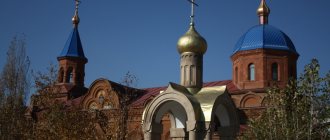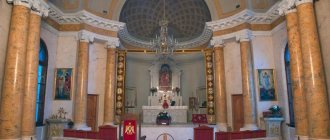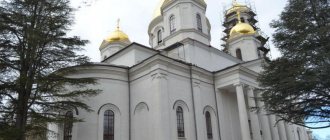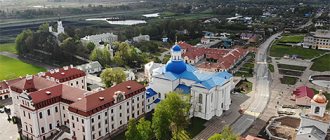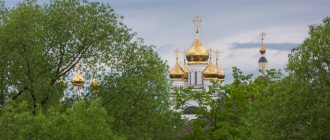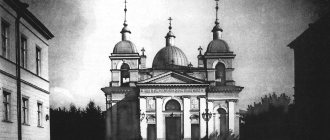Mir
Armenia Map loading in progress...
{"format":"leaflet","minzoom":false,"maxzoom":false,"limit":50,"offset":0,"link":"all","sort":[""], "order":[],"headers":"show","mainlabel":"","intro":"","outro":"","searchlabel":"\u2026 \u0441\u043b\u0435\ u0434\u0443\u044e\u0449\u0438\u0435 \u0440\u0435\u0437\u0443\u043b\u044c\u0442\u0430\u0442\u044b","default":"","import-annotation":false,"width ":"auto","height":"400px","centre":{"text":"","title":"""link":"""lat":40.76962720000000217623892240226268768310546875,"lon": 44.67366460000000216723492485471069812774658203125,"icon":""},"title":"","label":"","icon":"","lines":[],"polygons":[],"circles":[ ],"rectangles":[],"copycoords":false,"static":false,"zoom":8,"defzoom":14,"layers":["OpenStreetMap"],"image layers":[] ,"overlays":[],"resizable":false,"fullscreen":true,"scrollwheelzoom":true,"cluster":true,"clustermaxzoom":7,"clusterzoomonclick":true,"clustermaxradius":80, "clusterspiderfy":true,"geojson":"","clicktarget":"","showtitle":true,"hidenamespace":false,"template":"","userparam":"","activeicon": "","pagelabel":false,"ajaxcoordproperty":"","ajaxquery":"","locations":[{"text":"\u003Cb\u003E\u003Ca href=\"/palomnik/%D0% A5%D1%80%D0%B0%D0%BC_%D0%9F%D0%BE%D0%BA%D1%80%D0%BE%D0%B2%D0%B0_%D0%9F%D1%80% D0%B5%D1%81%D0%B2%D1%8F%D1%82%D0%BE%D0%B9_%D0%91%D0%BE%D0%B3%D0%BE%D1%80%D0% BE%D0%B4%D0%B8%D1%86%D1%8B_(%D0%95%D1%80%D0%B5%D0%B2%D0%B0%D0%BD)\» title=\»\ u0425\u0440\u0430\u043c \u041f\u043e\u043a\u0440\u043e\u0432\u0430 \u041f\u0440\u0435\u0441\u0432\u044f\u0442\u043e\u0439 \u 0411\u043e\u0433\u043e\u0440\ u043e\u0434\u0438\u0446\u044b (\u0415\u0440\u0435\u0432\u0430\u043d)\»\u003E\u0425\u0440\u0430\u043c \u041f\u043e\u043a\u0440 \u043e\u0432\u0430\ u041f\u0440\u0435\u0441\u0432\u044f\u0442\u043e\u0439 \u0411\u043e\u0433\u043e\u0440\u043e\u0434\u0438\u0446\u044b (\u0415\u0 440\u0435\u0432\u0430\u043d )\u003C/a\u003E\u003C/b\u003E","title":"\u0425\u0440\u0430\u043c \u041f\u043e\u043a\u0440\u043e\u0432\u0430 \u041f\u0440\u0435\u 0441 \u0432\u044f\u0442\u043e\u0439 \u0411\u043e\u0433\u043e\u0440\u043e\u0434\u0438\u0446\u044b (\u0415\u0440\u0435\u0432\u0430\ u043d)","link": "","lat":40.2240800000000007230482879094779491424560546875,"lon":44.5455979999999982510416884906589984893798828125,"icon":"/palomnik/images /c/ce/Green_marker.png"}],"imageLayers":[]}
Church of the Intercession of the Blessed Virgin Mary (Yerevan)
Armenia
(Armenian Հայաստան [hɑjɑsˈtɑn]), full official form -
Republic of Armenia
(Armenian Հայաստանի Հանրապետություն [hɑjɑstɑˈni h ɑnɾɑpɛtuˈtʰjun]) is a state in Transcaucasia.
History[edit]
According to ancient legends, early Christianity began to penetrate into the territory of modern Armenia already in the 1st century AD. e. It is believed that the Apostle Thaddeus, after visiting Edessa, went to Armenia to preach. He managed to convert many local residents to Christianity, including Princess Sandukht. In 301, King Tirdat III proclaimed Christianity as the state religion, thus Armenia became the first Christian state in the world.
Russian Orthodox Church[edit]
The appearance of the first parishes of the Russian Orthodox Church dates back to the 19th century and dates back to the time of Armenia’s entry into Russia. Churches were mainly founded in villages by Cossacks and military personnel resettled on the border in places where garrisons were stationed. Currently, there are five parishes of the Maykop and Adyghe diocese of the Russian Orthodox Church on the territory of Armenia. The main temple of the Russian Orthodox Church in Armenia is the temple in honor of the Intercession of the Blessed Virgin Mary, located in Yerevan.
On November 19, 1943, by the determination of the Holy Synod of the Russian Orthodox Church, Orthodox parishes on the territory of Armenia were transferred to the Georgian Orthodox Church.
Since 1991, Russian Orthodox parishes have come under the jurisdiction of the Krasnodar and Kuban diocese of the Russian Orthodox Church.
In 2001, Patriarch of Moscow and All Rus' Alexy II visited Armenia, announcing that a new Orthodox church would be built on the territory of Yerevan.
Old Church in Armenia #5 St. Hripsime
Saint Hripsime is another church dedicated to the four virgins. It was also built in the 7th century in the holy city. St. Hripsime is one of the oldest surviving churches both in Armenia and in the world.
According to legend, Hripsime, who was a Christian, did not want to be the wife of the pagan Roman emperor Diocletian. She fled to Armenia, where Trdat III also wanted to marry her, captivated by her beauty. Hripsime refused, and the king subjected her to cruel torture and death. On the site where St. Hripsime Cathedral is located today, there was originally a chapel.
This church is a masterpiece of Armenian early Christian architecture. Along with other nearby churches, St. Hripsime is also included in the UNESCO World Heritage List.
Shrines[edit]
The relics of ancient Christian saints in Armenia are located in the churches of the Armenian Apostolic Church.
- Relics of St. St. Gregory, enlightener of Armenia (Yerevan, Cathedral of St. Gregory)
- Relics of St. ap. from 70 Ananias (Yerevan, Church of St. Apostle Ananias)
- Spear of Longinus the Centurion (Vagharshapat, Etchmiadzin Monastery, 15 km west of Yerevan)
- Part of Noah's Ark (Vagharshapat, Etchmiadzin Monastery)
- Relics of St. ap. from 70 Thaddeus (Vagharshapat, Echmiadzin Monastery)
- Relics of St. St. Isaac the Great (Vagharshapat, Etchmiadzin Monastery)
- Hand of St. St. Gregory, Enlightener of Armenia (Vagharshapat, Etchmiadzin Monastery)
- Relics of St. mcc. Repsimiya, Gaiania and Marina (Vagharshapat, Etchmiadzin Monastery)
- Relics of St. St. Mesrop Mashtots (Oshakan village, temple of St. Mesrop Mashtots, near Vagharshapat)
- Shrouds of the Infant God (Alaverdi, former Odzun monastery, about 20 km northeast of Vanadzor)
Old church in Armenia #3 Talin Cathedral
Talin Cathedral or Talin Catholic Church is a 7th century church located in the center of the cemetery of the city of Talin (Aragatsotn Province). The church was unique due to its architectural style.
Unfortunately, it is currently destroyed. Both the dome and a large part of the western wing collapsed. Talina Church includes two prayer rooms. Each of these rooms is covered by a secret passage.
Differences between the Orthodox traditions of the AAC and the Russian Orthodox Church
For comparison with Russian Orthodox traditions, we will describe the baptismal rite adopted in the Armenian Church. There are not so many differences, but they still exist.
Many Russian Orthodox Christians who come to an Armenian church for the first time are surprised by the fact that candles here are placed not on special pedestals in small candlesticks, but in an ordinary box with sand. However, they are not for sale, but simply lying nearby. However, many Armenians, having taken a candle, leave money for it of their own free will. The believers themselves also remove the cinders.
In some Armenian churches, children are not immersed in the baptismal font. Simply take water from a large bowl and wash. Baptism in the Armenian church has another interesting feature. The priest, saying a prayer, speaks in a chant. Due to the good acoustics of Armenian churches, it sounds impressive. Baptismal crosses also differ from Russian ones. They are usually very beautifully decorated with vines. Crosses are hung on the cloth (red and white threads woven together). Armenians, unlike Russians, are baptized from left to right. Otherwise, the ritual of introducing a baby to the faith is similar to the Russian Orthodox one.
Old church in Armenia #6 Tatev Monastery
Tatev is one of the most famous monasteries in Armenia, and probably in the whole world. This is a 9th century church located near the village of Tatev (Syunik region).
Tatev Monastery played an important role in the history of the region. Previously, this was the episcopal residence of Syunik. The church hosted Tatev University in the 14th and 15th centuries. It was one of the most important medieval educational centers in Armenia.
Patriarchs-Catholicos (Etchmiadzin Catholicosate)
[3]
Department in Vagharshapt
- St. Gregory I the Illuminator (302 - 325)
- Aristakes I Parthian (325 - 333)
- Vrtanes the Parthian (333 - 341)
- Hesychius (Iusik) Parthian (341 - 347)
- Daniel (347) chorep. Taronsky, elected archbishop.
(? - no later than 369) installed as Catholicos during the exile of Nerses the Great
- 434 - 444 - widowhood of the throne
Department in Dvin
- Hovhannes I (Mandakuni) (478 - 490)
- Babken I (Otmesetsi) (490 - 516)
- Samvel I (516 - 526)
- Mouchet I (526 - 534)
- Isaac II (534 - 539)
- Christopher I (539 - 545)
- Ghewond I (545 - 548)
- Nerses II (548 - 557)
- Hovhannes II (557 - 574)
- Moses II of Egivard (574 - 604)
- John III of Bagara (anti-Catholicos, last Greek protege) (595-616)
Department in Akhtamar
- Stepanos II (Rishtuni) (929 - 930)
- Theodoros I (Rishtuni) (930 - 941)
- Yeghishe I (Rishtuni) (941 - 946)
- Ananias I (946 - 968)
Department in Arkin
- Vaan I (968 - 969)
- Stepanos III (969 - 972)
- Khachik I (973 - 992)
Department in Ani
- Sarkis I (992 - 1019)
- Petros I Getadarian (1019 - 1058)
Department in Tevilura
- Khachik II 1058 - 1065
Department in Jamtava
- Grigor II (Palavuni) (1066 - 1105)
Department in Rumkla
- Barseg I (1105 - 1113)
- Grigor III (Palavuni) (1113 - 1166)
- Nerses IV Shnorali (1166 - 1173)
- Grigor IV Tha (1173 - 1193)
- Grigor V (Karavezha) (1193 - 1194)
- Gregory VI (Apirat) (1194 - 1203)
- Barseg II (Eastern Catholicos) of Ani (1195 - 1206) [4]
Pulpit in Sis
- Gregory VII (1293 - 1307)
- Constantine III (1307 - 1322)
- Constantine IV (1323 - 1326)
- Hakob II (1327 - 1341)
- Mkhitar I (1341 - 1355)
- Hakob II, again (1355 - 1359)
- Mesrop I (1359 - 1372)
- Constantine V (1372 - 1374)
- Poghos I (1374 - 1382)
- Theodoros II (1382 - 1392)
- Karapet I (1393 - 1404)
- Hakob III (1404 - 1411)
- Gregory VIII (Handsgat) (1411 - 1418)
- Poghos II (1418 - 1430)
- Constantine VI (Vagatsi) (1430 - 1439)
- Grigor IX (Musabeghiyan) (1439 - 1441)
Department in Etchmiadzin
- Kirakos I (1441 - 1443)
- Grigor X (1443 - 1465)
- Aristakes II (Arotakal) (1465 - 1469)
- Sarkis II (Ajatar) (1469 - 1474)
- Hovhannes VII (1474 - 1484)
- Sarkis III (Musail) (1484 - 1515)
- Zakaria II (1515 - 1520)
- Sarkis IV (1520 - 1536)
- Grigor XI ((1536 - 1545)
- Stepanos V (1545 - 1567)
- Michael I (1567 - 1576)
- Gregory XII (1576 - 1590)
- David IV (1590 - 1629)
- Movses III (1629 - 1632)
- Pilipos I (1633 - 1655)
- Hakob IV (1655 - 1680)
- widowhood of the department
(1680 -1682)
- widowhood of the department
(1882 -1885)
Canonical structure of the Armenian Apostolic Church
The dioceses and parishes of the AAC are scattered across 5 continents of the world and unite about 6 million believers. The highest body of the AAC is the Church-National Council, consisting of clergy and secular persons. His competence includes issues of church legislation and canons, changes in customs and rituals, and supreme supervision of management and hierarchical structure. At the Council, the election of the highest spiritual Primate of the AAC, who is the Primate of the Etchmiadzin Throne, takes place.
Etchmiadzin Catholicosate
His Holiness the Supreme Patriarch and Catholicos of all Armenians (since 1999 Karekin II) represents the highest centralized church authority of the AAC, exercises supervision over all church institutions, is the guardian of dogmatic teaching and the guardian of the right faith and church piety, the main legislator and the supreme judge. The insignia of the Catholicos of all Armenians are: the title “Servant of Jesus Christ and, by the inscrutable will of God, the High Hierarch and Catholicos of all Armenians, the Supreme Patriarch of the National First Throne of Ararat of the Apostolic Mother Church, the holy cathedral of Etchmiadzin”, coat of arms, seal, veil with the image of the Lamb, banner-gonfalon, large and small staffs, a club, a throne, tents (an honorary retinue in red robes with maces in their hands), a diamond cross on the hood.
The Supreme Spiritual Council under the Catholicos currently consists of 2 Patriarchs, 10 archbishops, 4 bishops and 5 laity. The dioceses under the jurisdiction of the Throne of Etchmiadzin are: Ararat Patriarchal (center - Yerevan), Shirak (Gyumri), Armavir (Armavir), Gegharkunik (Gavar), Syunik (Goris), Aragatsotn (Ashtarak), Gugark (Vanadzor), Kotayk (Hrazdan) dioceses - in Armenia; Artsakh Diocese (Shusha); Georgian and Imereti Diocese (Tbilisi); Azerbaijan and Turkestan diocese (Baku; currently not replaced); Novonakhichevan and Russian diocese (Moscow), diocese of the south of Russia (Krasnodar) - in Russia; Atrpatakan (Tabriz), Tehran (Tehran) and Isfahan (Nor-Jugha) dioceses - in Iran; diocese of Ukraine (Lvov); Egyptian diocese (Cairo, Church of St. Gregory the Illuminator), communities in Ethiopia (Addis Ababa), Sudan (Khartoum) and South Africa (Johannesburg) - in Africa; Western European Patriarchal Exarchate (Paris, St. John's Cathedral); diocesan districts: Marseille (Targmanchats Cathedral), Lyon (Cathedral of St. James); spiritual pastorates: Dutch (Amsterdam, The Hague), Belgian (Brussels, Antwerp), Italian (Milan, Padua, Venice, Rome); Eastern American Diocese (New York), Western American (California) Diocese (Los Angeles) - in the USA; The Argentine diocese (Buenos Aires, St. Gregory's Cathedral), the Brazilian diocese (Sao Paulo), the Uruguayan diocese (Montevideo) - in the South. America; Diocese of Canada (Montreal); Iraqi Diocese (Baghdad); Diocese of Australia and New Zealand (Sydney); English diocese (London, churches of St. Sarkis and St. Peter) and Manchester prelacy (Church of the Holy Trinity); Greek Diocese (Athens); Romanian Diocese (Bucharest); Bulgarian Diocese (Sofia); Central European Patriarchal Exarchate (Vienna) and spiritual pastorate in Sweden (Stockholm); German diocese (Cologne); Swiss diocese (Geneva); Indian and Far Eastern Patriarchal Vicarage (Calcutta).
The main shrines of the AAC are kept in Etchmiadzin. The holy copy (Geghard), which pierced the side of Jesus Christ, according to legend, was brought to Armenia by the apostle. Thaddeus. Hand of St. Gregory the Illuminator is a symbol of the power of the Supreme Patriarch and Catholicos of all Armenians; during the preparation of Chrism he sanctifies St. myrrh with these 2 shrines. A piece of wood from Noah’s Ark, which stopped “on the mountains of Ararat” (Gen. 8.4), was found at the beginning of the 4th century. Bishop James of Nisibino; in 1766, a small part of the tree of the ark was given by Catholicos Simeon I as a gift to Empress Catherine II.
Cilician Catholicosate
The See of the Most Holy Catholicos of the Great House of Cilicia (since 1995 Aram I) is located in Antillas near Beirut. The following dioceses are under its jurisdiction: Lebanese (Beirut, St. Nshan Cathedral); The Aleppo diocese, the governorship of Cizre and the Damascus diocese (currently under the control of Etchmiadzin) - in Syria; Kuwait Vicarage; Diocese of Cyprus (Nicosia).
Catholicos have the exclusive right to consecrate the holy chrism (the celebration of Chrismation takes place once every 7 years) and to ordain bishops. Their competence includes the blessing of new church laws, the establishment of new holidays, the establishment of new dioceses and other issues of church administration.
Jerusalem Patriarchate
Under the direction of His Beatitude the Patriarch of Jerusalem, Primate of the Apostolic See, St. Jacob (since 1990 Torkom II), are located in Armenia. church communities in Israel, Jordan and Palestine (approx. 10 thousand parishioners). The Patriarch takes care of the holy places in Palestine belonging to the AAC. Subordinate to him are 2 vicariates (Amman and Haifa) and 2 rectors (Jaffa and Ramla).
Istanbul (Constantinople) Patriarchate
The role of this Throne of the AAC decreased significantly after the genocide of 1915, and currently, of the 1.35 million parishioners who numbered before the First World War, only about 82 thousand remain in it. Under the administration of His Beatitude the Armenian Patriarch of Istanbul and all Turkey (since 1998 Mesrob II) The Patriarchal Region is located in Turkey. Wikipedia: Rumelihisary, Kayseri, Diyarbakir, Iskenderun. There are more than 30 churches (including the Patriarchal Cathedral of the Most Holy Theotokos), in which 30 priests and 20 deacons serve.
The Jerusalem and Istanbul Patriarchates do not have subordinate departments and are spiritually dependent on the Supreme Patriarch and Catholicos of all Armenians.
Theological educational institutions operate under all 4 main thrones of the AAC: DS “Vazgenyan” in Sevan and Gyumri, DS “Gevorgyan” in Etchmiadzin, DS of the Cilician Catholicosate in Bikfaya (Lebanon), seminary of St. James in Jerusalem, Armenian. Lyceum in Uskudar, a suburb of Istanbul. Each year, between 10 and 30 graduates graduate. The Armenian Theological School of St. has been operating in America since 1964. Nersesa (New Rochelle, New York).



